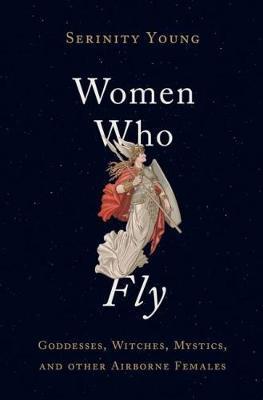Women Who Fly

Women Who Fly
artistic productions. She covers a wide range of themes, including supernatural women, like the Valkyries, who transport men to immortality; winged goddesses like Iris and the Greek goddess Nike; figures of terror like the Furies, witches, and succubi; the relationship of marriage and freedom; the connections
between women, death, and rebirth; dreams about flying and shamanistic journeys; airborne Christian mystics; and wayward women like Lilith and Morgan le Fay. Young also looks at the mythology surrounding real-life female aviators like Amelia Earhart and Hanna Reitsch. Throughout these examples of flying women, Young demonstrates that female power has been inextricably linked with female sexuality and that the desire to control it was and continues to be a pervasive theme in these stories. The
relationship between sex and power is most vividly portrayed in the 12th-century Niebelungenlied, in which the proud warrior-queen Brunnhilde loses her great physical strength when she is tricked into losing her virginity. But even in the 20th century the same idea is reflected in the exploits of the
comic book character Wonder Woman, who, posits Young, retains her physical strength only because her love for fellow aviator Steve Trevor goes unrequited. The first book to systematically chronicle the figure of the flying woman in myth, literature, and art, Women Who Fly sheds new light on the ways in which women have both influenced and been understood by society and religious traditions around the world.
PRP: 297.50 Lei
Acesta este Prețul Recomandat de Producător. Prețul de vânzare al produsului este afișat mai jos.
267.75Lei
267.75Lei
297.50 LeiLivrare in 2-4 saptamani
Descrierea produsului
artistic productions. She covers a wide range of themes, including supernatural women, like the Valkyries, who transport men to immortality; winged goddesses like Iris and the Greek goddess Nike; figures of terror like the Furies, witches, and succubi; the relationship of marriage and freedom; the connections
between women, death, and rebirth; dreams about flying and shamanistic journeys; airborne Christian mystics; and wayward women like Lilith and Morgan le Fay. Young also looks at the mythology surrounding real-life female aviators like Amelia Earhart and Hanna Reitsch. Throughout these examples of flying women, Young demonstrates that female power has been inextricably linked with female sexuality and that the desire to control it was and continues to be a pervasive theme in these stories. The
relationship between sex and power is most vividly portrayed in the 12th-century Niebelungenlied, in which the proud warrior-queen Brunnhilde loses her great physical strength when she is tricked into losing her virginity. But even in the 20th century the same idea is reflected in the exploits of the
comic book character Wonder Woman, who, posits Young, retains her physical strength only because her love for fellow aviator Steve Trevor goes unrequited. The first book to systematically chronicle the figure of the flying woman in myth, literature, and art, Women Who Fly sheds new light on the ways in which women have both influenced and been understood by society and religious traditions around the world.
Detaliile produsului










